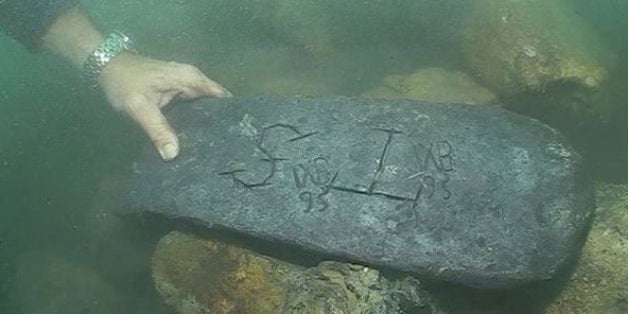
One of the most famous lost pirate treasures may have just been found.
Explorers working off the coast of Madagascar have uncovered a giant silver ingot that they believe came from the wreck of the Adventure Galley, a ship used by the notorious 17th-century pirate Captain William Kidd.

"There's more down there. I know the whole bottom of the cavity where I found the silver bar is filled with metal," marine archaeologist and treasure hunter Barry Clifford, who discovered the wreck, told the BBC. "It's too murky down there to see what metal, but my metal detector tells me there is metal on all sides."
The ingot, which weighs more than 120 pounds, was discovered off the coast of the small island of Sainte Marie. It was handed over to Madagascar President Hery Rajaonarimampianina in a ceremony on Thursday.
The silver bar is marked with the letters "T" and "S," and the BBC reports that it's believed to have come from 17-century Bolivia. The ship was built in England.
"All the evidence points to it being part of Captain Kidd’s treasure," Clifford told History.com. "It’s a huge find for my team but an even bigger find for Madagascar and world history.”
Clifford told AFP that he has found 13 ships in the bay over the past 15 years, including Captain Kidd's Adventure Galley and Fiery Dragon, a ship once captained by pirate William Condon, a.k.a. Billy One-Hand.
Archaeologist John de Bry, who was at the ceremony, told AFP that the wreck and ingot were "irrefutable proof that this is indeed the treasure of the Adventure Gallery."
However, the claim is already being refuted.
Robert Ritchie, a historian and author of “Captain Kidd and the War Against the Pirate,” told the Washington Post that a number of ships were sunk in that harbor.
“I’m doubtful, but who knows? It could well be from the Adventure Galley," Ritchie told the paper. "But it would be from one of Kidd’s men more than from Kidd himself.”
Clifford's methods are also coming under fire by the United Nations Educational, Scientific and Cultural Organization.
"It is basically a film team going and directly intervening at an archeological site -- that should not be the case," Ulrike Guerin, underwater specialist at UNESCO in Paris, told AFP.
Clifford's discovery was documented by a film crew and will be featured in an eight-part History series later this year.
"We do not say everything that has been done is bad. We will go and check, but there are certain doubts about the scientific handling of the intervention," Guerin told the news agency. "It is not enough that you find the treasure if you destroy the whole archaeological site with it."
The ingot will undergo more testing to see if it can be positively linked with Kidd's ship.
Captain Kidd was born in Scotland in 1645 and had a long and colorful career as a privateer and pirate, working the coast of the American colonies, the Red Sea and the Indian Ocean. He was eventually caught and tried for murder and piracy, then executed in London in 1701.
Kidd's body was tarred, placed inside a metal cage and hung at Tilbury Point on the River Thames as an example to sailors entering the Port of London. His body was left there for nearly two years as birds picked the carcass to the bone, according to CaptainKidd.org. Yet some people believe Kidd was acting in accordance with his charter as a privateer and was wrongfully tried and executed.
Since that time, Kidd's life story has been the inspiration for literature about pirates, and hunts for his supposed lost treasure have been conducted in just about every place he visited. One of his other ships, the Quedagh Merchant, also known as the Cara Merchant, was believed to have been found in the Caribbean in 2007 in less than 10 feet of water. That wreck is still being explored.


